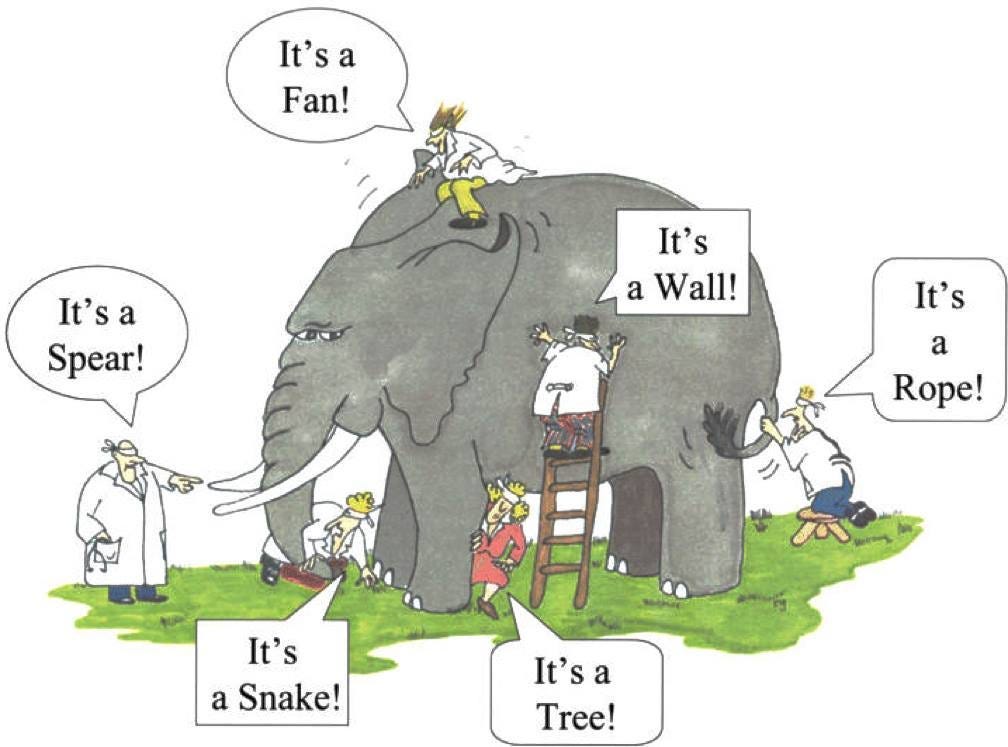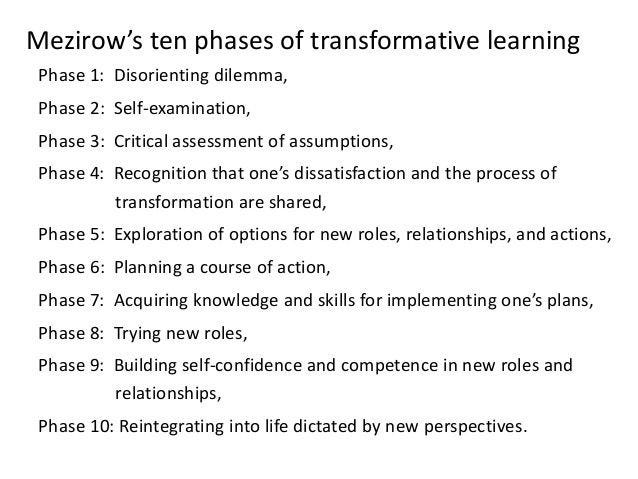Successful People All Have This Rare Experience In Common, According To 10 Independent Lines Of Research
In the mid-1990s, two of the most successful CEOs had a life-changing conversation.
John Chambers (Cisco) was in his mid-forties. Jack Welch (GE) was in his late fifties. Both titans managed tens of thousands of people.
At the time, Cisco was on its way to becoming the most valuable company in the world, and Chambers asked Welch for advice…
I think we’ve got a company that’s close to becoming a great company. What am I missing?
Without pause, Welch responded…
John, a near-death experience!
Feeling like he understood, Chambers started to list examples from his own life…
Well, I’ve gone through some pretty tough times…
Welch interrupted him...
No John. Until you’ve gone through a near-death experience, you will never be a great leader, because you have to question your ability to lead, your friends who suddenly turn on you. You’ve got to go through that, and your company has to go through that as well.
It wasn’t until the 2001 dotcom crash happened and Cisco had to lay off 7,000 employees that Chambers understood Welch’s advice. Looking back on the experience today, he credits it as the turning point that made him a great leader.
This story matches one of the most fundamental findings in the psychology of human development…
This Type Of Experience Is A Crucial Ingredient Of Greatness
10 different researchers from different fields have independently found the same critical ingredient for greatness that is rarely talked about:
Transformative Learning: Columbia University Jack Mezirow’s model of disorienting dilemmas
Childhood Development: Jean Piaget’s model of accommodation
Adult Development: Harvard University Robert Kegan’s model of optimal conflict
Creativity: Researcher Dean Keith Simonton’s model of diversifying experiences
Leadership: Researcher Warren Bennis’ model of crucible experiences
Learning: Learning researcher Robert Bjork's desirable difficulty
Psychology: Researchers Richard Tedeschi and Lawrence Calhoun’s post-traumatic growth
Educational Psychology: Lev Vygotsky’s Zone of Proximal Development
Creativity (flow): Researcher Mihaly Csikszentmihalyi's optimal challenge
Risk Management: Investor and researcher Nassim Taleb’s antifragility
Although each of these researchers uses different words, they all seem to be talking about the same thing…
To Reach Our Full Potential, It Is Important To Have A Unique Type Of Experience That Has Three Qualities
This experience has the following qualities…
Shows our limits: Cannot be explained using our existing mental models.
Sparks reflection: Forces us to question and change some of our most fundamental assumptions about who we are, why we’re here, and how reality works.
Is in an emotional goldilocks zone: Is deeply painful, but not so difficult that it overwhelms us.
Put differently, the goldilocks zone (ie, the growth zone) includes experiences that are outside of our comfort zone, but before our burnout zone:
To understand the nuances of this model, let's dig deeper into the definitions of the terms above…
This Is What We Learn When We Synthesize All Of The Different Terms For The Same Phenomenon
I find multi-defining to be super helpful because although these researchers are talking about the same underlying phenomenon, they are talking about different parts of it. Thus each perspective offers something new. The parable of the blind scientists touching different parts of an element and seeing different things is apt:
By synthesizing the different perspectives, we can gain a deeper overall understanding.
With that said let’s explore some definitions…
#1: Robert Kegan adds “sufficient supports” and “nor able to escape” as qualities of transformative experience
Harvard researcher Robert Kegan defines optimal conflict as…
The persistent experience of some frustration, dilemma, life puzzle, quandary, or personal problem that is perfectly designed to cause us to feel the limits of our current way of knowing in some sphere of our living that we care about, with sufficient supports so that we are neither overwhelmed by the conflict nor able to escape or diffuse it.
Two unique things about Kegan’s definition that jump out to me are:
Sufficient supports: This reminds me that we can increase our own level of resourcefulness by getting outside coaching, seeking new knowledge or becoming more resourced internally.
Nor able to escape: I find that part of me avoids certain types of internal conflict. For example, I find some of the deeper disagreements of marriage that require my wife and I to reconcile our different worldviews and collaborate on triggering topics to be particularly challenging and also life-changing. If these same challenges happened in another type of relationship I would likely just avoid them.
#2: Warren Bennis and Jack Mezirow break down 5 keys on how to reflect on transformative experiences
A Harvard Business Review article, written by Warren Bennis who interviewed more than 40 top leaders, put it this way:
We were surprised to find that all of them — young and old — were able to point to intense, often traumatic, always unplanned experiences that had transformed them and had become the sources of their distinctive leadership abilities…the crucible experience was a trial and a test, a point of deep self-reflection that forced them to question who they were and what mattered to them. It required them to examine their values, question their assumptions, hone their judgment. And, invariably, they emerged from the crucible stronger and more sure of themselves and their purpose — changed in some fundamental way.
Jack Mezirow defined disorienting dilemmas as experiences that challenge and transform…
…problematic frames of reference—sets of fixed assumptions and expectations (habits of mind, meaning perspectives, mindsets)—to make them more inclusive, discriminating, open, reflective, and emotionally able to change.
—Jack Mezirow
Mezirow and Bennis add texture to the various types of reflection that are important. This includes reflection on:
What matters (values)
Assumptions
Expectations (habits of mind)
Perspectives
Mindsets
#3: Jack Mezirow provides a 10-step process for capitalizing on transformative experiences
Mezirow also saw dilemmas as a part of a larger 10-step transformative process:
This process helps us understand how we can capitalize on transformative experiences step-by-step. As the saying goes:
Never waste the opportunity offered by a good crisis.
—Machiavelli
#4: Mihaly Csikszentmihalyi adds the idea of mini transformative experiences
Mihaly Csikszentmihalyi talks about flow as a form of optimal challenge where things aren’t too hard and they aren’t too easy:
Csikszentmihalyi helps us move from seeing transformative experience as just one big experience to a zone we can have mini transformative experiences in.
For example, if something gets too hard for us, we can adapt by acquiring a new skill, perspective, or mindset that makes the experience easier and pushes it into the growth zone.
#4: Dean Keith Simonton found that 45% of eminent people have had a parent die before they turned 20
Researcher Dean Keith Simonton defines diversifying experiences as…
Events or circumstances that disrupt conventional and/or fixed patterns of thinking, thus enabling a person to view the world in multiple ways.
Simonton came across the power of diversifying experiences by studying some of history’s great innovators. In one really interesting study of 700 eminent people, a surprising 45% of them had at least one parent die by the time they turned 20 years old.
This fascinating study shows how early transformative experiences can be particularly influential.
#5: Nassim Taleb shows that many of the same concepts apply to systems as well—not just people
Nassim Taleb says something is antifragile when it gains from disorder, which is the opposite of fragility, which shatters with disorder:
Personal Resonance: Toward A Growth-First Lifestyle
As I get older and hopefully a little bit wiser, I notice my values evolve.
More specifically, I notice that while achievement is still a big part of my life, it is becoming less important relative to other aspects like health and family.
More than anything else though, I increasingly notice that I value becoming. In other words, I enjoy the facilitation who I am evolving into and the revelation of experiencing new and surprising dimensions of reality.
As such, I notice myself using new decision-making frameworks. Rather than setting goals and then finding the shortest path toward the desired result, I notice myself making decisions that will lead to the largest personal transformation and then letting the results emerge organically.
While the gains of additional investment into money, prestige, and health have diminishing returns past a certain point, personal growth seems to have exponential returns in four ways…
First, the more I grow, the more that I enjoy the actual experience of growth.
Philosopher LA Paul beautifully captures the revelation of personal growth in her book, Transformative Experience:
When we choose to have a transformative experience, we choose to discover its intrinsic experiential nature, whether that discovery involves joy, fear, peacefulness, happiness, fulfillment, sadness, anxiety, suffering, or pleasure, or some complex mixture thereof. If we choose to have the transformative experience, we also choose to create and discover new preferences, that is, to experience the way our preferences will evolve, and often, in the process, to create and discover a new self.
—LA Paul
I would also add that when we choose to have a transformative experience, we also discover new ways of defining ourself and new ways of experiencing reality.
Second, the more I grow, the more tools I have to accelerate my own evolution.
More specifically, I gain tools like…
I gain more sensitivity into noticing and managing my emotions. This allows me to more effectively stay in the goldilocks zone of growth in situations that would’ve previously overwhelmed me.
I learn how to learn. Thus, I can pull levels of learning that lead to faster personal development related to how I collect experiences/knowledge, process, experiment, and collect feedback.
I discover new forms of personal growth. Over the years, I’ve explore tools that are cognitive, emotional, and somatic. In addition, I’ve explored integral philosophy. These have led to a type of growth that is more holistic.
I understand how I co-create reality. By noticing how I construct reality, I can more directly change my experience of reality.
Third, I find that focusing on growth-first also allows me to achieve more as an after-effect.
I write more about the research behind this phenomenon in If you want to be massively successful, do NOT set ambitious goals, according to studies.
Finally, I can take my growth with me wherever I go forever.
Over 25 years as an entrepreneur, I’ve realized that products and companies are temporary. Almost everything we do is likely to have a short shelf life in the grand scheme of our life.
Because, of these benefits, I increasingly lead a growth-first lifestyle. As the saying goes, “change yourself to change the world.”
All of these benefits lead to the question…
What does it look like to lead a growth-first lifestyle?
To begin to answer this question, I spent many hours curating lists of transformative experiences collected by researchers…
100+ Transformative Experiences That Will Change Your Life Forever (Paid Subscribers)
Designing for transformation is a combination of:
Recognizing and capitalizing on existing transformative experiences. We and the world are in a state of constant flux. These changes create constant opportunities for transformation. Speaking personally, sometimes I have to remind myself to simply embrace rather than avoid the everyday experiences around me that are opportunities for growth. Sometimes, these aren’t as sexy as doing a big new project or traveling the world, but they’re just as transformative.
Proactively searching for transformative experiences. This means designing one’s lifestyle to include and capitalize on transformative experiences.
With that said, I created the mind map with the following categories:
Work
Education
Relationship
Pivotal Life Events
Life Crises
Multiculturalism
Experiments
Higher Power
Changing Living Environment
Feeling Different







